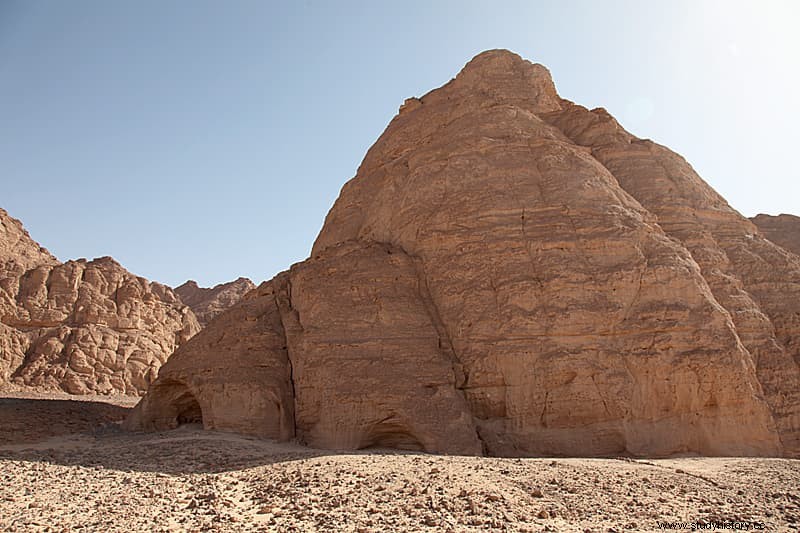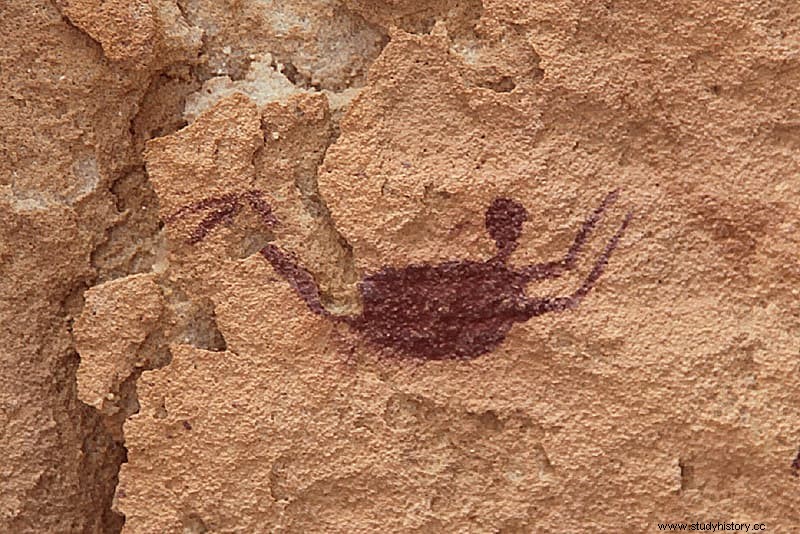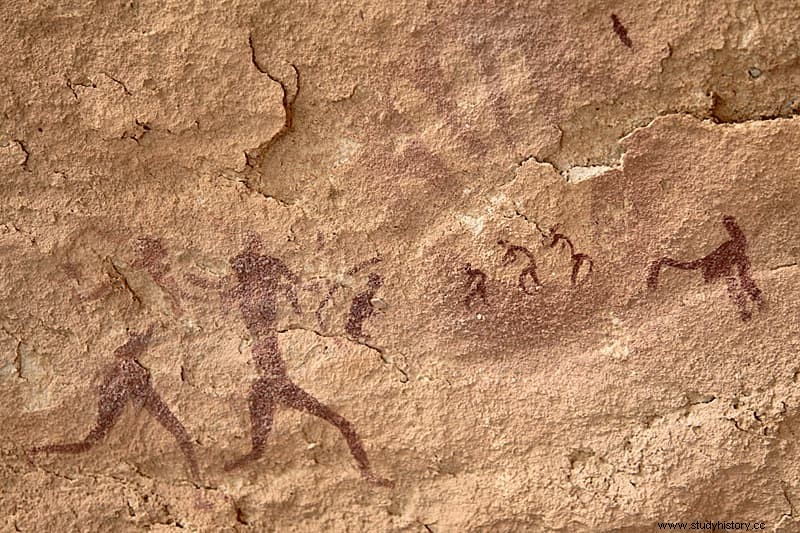Thousands of years ago, the Sahara was surprisingly green, with rich vegetation, trees, and lakes covering almost all of what is now sandy desert. There were vast open grasslands, forests, rivers, lakes and wetlands, which allowed the survival of a wide variety of animal species. Antelopes, gazelles, giraffes, elephants, wildebeests, hyenas, zebras, and other animals roamed the savannah, while crocodiles prowled the riverbanks and hippos wallowed in the mud.
The evidence of this green past of the Sahara is recorded in the rocks, in the form of fossils and petroglyphs and cave paintings made by humans who lived at that time.
One of the best known places for these petroglyphs is the Cave of the Swimmers, in the remote mountains of Gilf Kebir, in southwestern Egypt, near the border with Libya.

The Cueva de los Nadadores was discovered by the Hungarian explorer László Almásy in October 1933. The cave contains small artistic representations of what appear to be people swimming. It is estimated that the paintings were created during the Neolithic, about 8,000 years ago.
László Almásy, in his book The Unknown Sahara, postulates that the swimming scenes are actual representations of life at the time they were painted, suggesting that there was a climate change from temperate to desert. At the time it was a radically new theory that sounded so dubious that his publisher felt compelled to add several footnotes to the book to make it clear that they did not share this opinion. 
László Almásy's theory was sensational, but it was not entirely new. Many ancient historians, such as Herodotus and Strabo, mention the existence of a wet and vegetated Sahara, but these claims were not taken seriously by scientists due to their anecdotal nature.
In the second half of the 20th century, however, increasing evidence began to emerge showing that subtropical North Africa was much wetter in the early and mid-Holocene than it is today. In this period, now known as the African Humid Period, there were lush green forests in the vicinity of lakes and rivers, and smaller bushes elsewhere. Perennial lakes were abundant and their level was much higher.

Between 6,000 and 5,000 years ago, the climate began to change and the vegetation decreased. The Sahara became arid and was reclaimed by sand that washed in from dry lakes. The desiccation of the Sahara forced human beings to move to the Nile, where the society of Ancient Egypt, with pharaohs and pyramids, ended up being forged by these climatic refugees.
László Almásy is one of the few explorers who ventured into the Libyan desert in the late 1920s and early 1930s. In 1932 Almásy embarked on an expedition to find the legendary Zerzura, the Oasis of the Birds , along with three other British explorers. The men took a plane with them and, surveying the desert from the air, discovered three hidden valleys with vegetation to the north of the Gilf Kebir. However, all attempts to reach the mouth of the valley failed.

In 1933 Almásy embarked on another expedition, this time with the noted German ethnographer Leo Frobenius, and managed to enter the elusive valleys. He discovered many sites of prehistoric rock art, including the Swimmer's Cave in Wadi Sora . A fictionalized account of his travels was depicted in the film The English Patient , where László Almásy was played by Ralph Fiennes.
This article was published on Amusing Planet. Translated from English with permission.
Fonts
Theory and modeling of the African Humid Period and the Green Sahara / The Cave of Swimmers (Bradshaw Foundation) / Wikipedia
